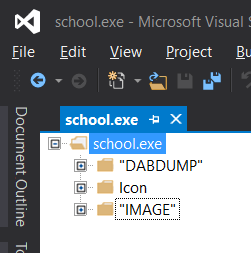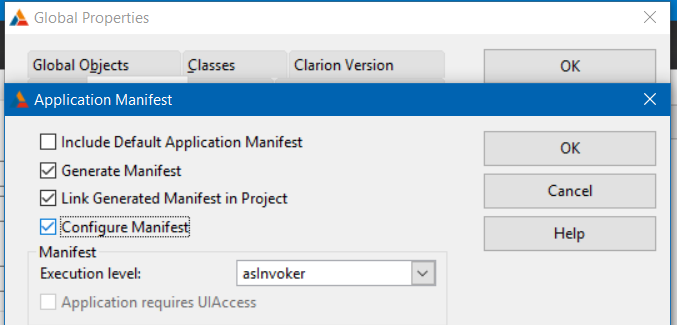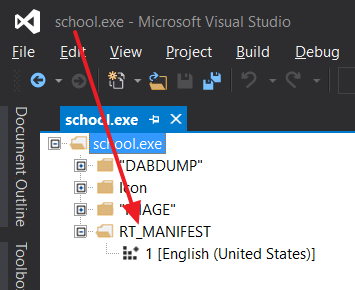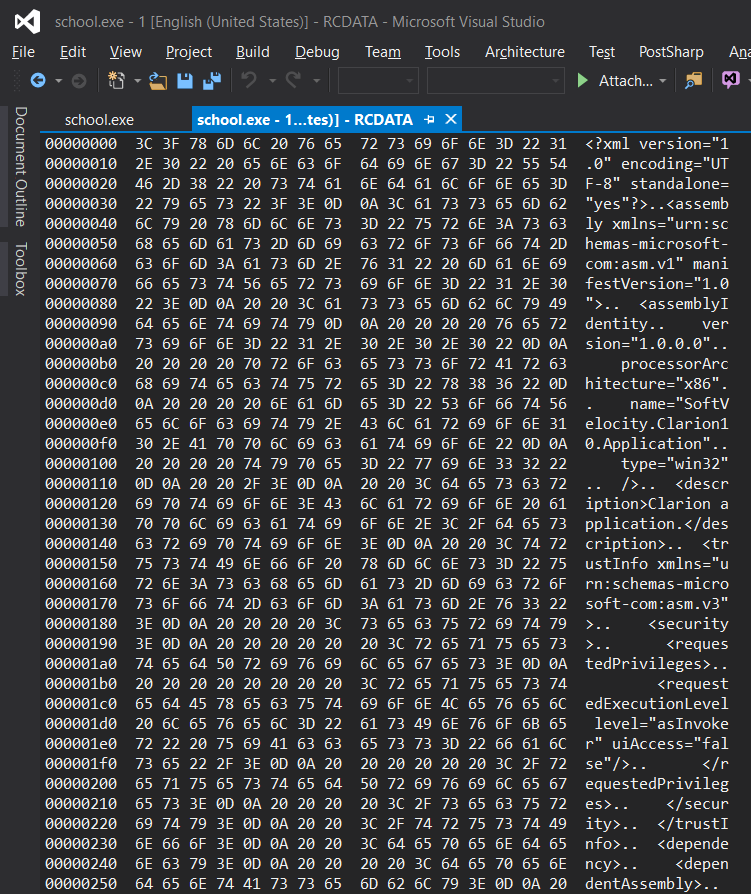Interestingly, you can open a Clarion EXE in Visual Studio and it shows you a bunch of nice things.
Here is School.exe:
There are two ways to “manifest” your EXE but firstly, let’s look at what an application manifest is.
Application Manifests
An application manifest is an XML file that describes and identifies the shared and private side-by-side assemblies that an application should bind to at run time.
– Application manifests - Win32 apps | Microsoft Learn
That MSDN page also states that:
Application manifests should be included as a resource in the application’s EXE file or DLL.
Notice the “should” though. Wikipedia explains this nicely:
It is either an XML file with .manifest filename extension that accompanies executable files or is an integral part of them, in the same XML format.
– Manifest file - Wikipedia
So, if you don’t include the manifest as a resource it should be pretty easy to tell if you have a manifest or not. Either there is a file called myapp.exe.manifest or there isn’t ![]()
To determine if your manifest is included as a resource you obviously need something that can read the EXE/DLL resources. Since you probably have Visual Studio installed already this is easy enough to do!
First I apply the manifest to my school.app:
Generate and Make the application, open the EXE again in Visual Studio and there it is!
Double click on that, or Right-Click and “Open” to see the contents of the resource and although VS displays it as binary it should be pretty obviously manifesty:



